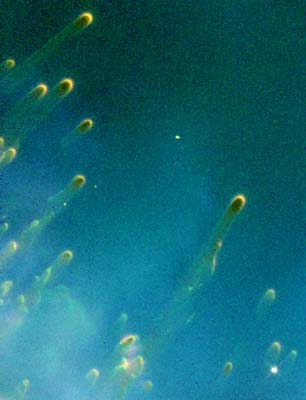Age of the Universe: Introduction
|
Image of comet-like knots around a dying star in the Helix Nebula from the Hubble Telescope |
The astronomer, Edwin Hubble (1889-1953), made some very significant discoveries about the universe. Due largely to his work, we know that the universe is expanding. The current theory that most accurately accounts for observed phenomena is called the Big Bang. The Big Bang theory states that the universe started as very hot, very dense concentration of all the energy and matter that has evolved into the current universe. It contained all the condensed matter that now makes up stars, planets, galaxies, everything in our universe, and has been expanding and cooling ever since. One of Hubble's contributions is a constant, now called the Hubble Constant, and can be used to approximate the age of the universe and its rate of expansion. One of the consequences of Hubble's work is verification that the universe is expanding. As an object moves away from us, its emitted light waves as measured by a spectrometer are |
|
measured by a spectrometer are shifted to the right,or towards the red end of the spectrum. This phenomenon is known as redshift. (If it moves toward us, there is a shift to the left, or the blue end of the spectrum.) Hubble obtained this constant by making a plot of
redshift of celestial objects vs their distance away from us and finding
the slope of the line of best fit. Although his original calculations
were inaccurate due to minimal and misinterpreted data, his method
has been adapted to more extensive data on galaxies to obtain a more
accurate value for the slope of the line of best fit, the Hubble Constant.
The redshift can be used to approximate the velocity of a celestial
object relative to Earth, so the Hubble constant gives us a measure
of velocity in terms of distance for distant galaxies. |
|
This material is based upon work supported by the National Science Foundation under Grant GEO-0355224. Any opinions, findings, and conclusions or recommendations expressed in this material are those of the authors and do not necessarily reflect the views of the National Science Foundation.

